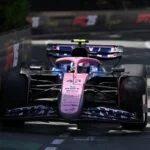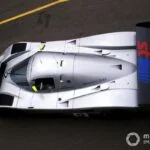Analyzing McLaren’s Strategy in the 2025 Japanese Grand Prix
The Japanese Grand Prix of 2025 saw Max Verstappen clinch his first victory of the season, despite McLaren having a pace advantage over Red Bull. But was this win the crowning glory of an exceptional weekend, or a missed opportunity for ? Let’s delve into the strategy choices made by the papaya team.
The Impact of Qualifying on Race Outcome
Qualifying played a crucial role in determining the race outcome. McLaren had the edge over Verstappen by a couple of tenths in terms of pure race pace. This meant that had two options for this race: play it safe and accept the double podium behind Verstappen, or at least try something – not a gamble, but something that wouldn’t have hurt the constructors’ championship tally.
The latter seemed possible in two ways. First, through strategy, as Norris suggested. An undercut could have been a potential weapon, especially with McLaren’s speed. However, an undercut would have been too risky due to the threat of a safety car and the loss of track position.
The Possibility of an Overcut Strategy
The second chance was to switch positions towards the end to at least give Piastri a chance to overtake Verstappen. Yes, it required a seven- or eight-tenth delta and Piastri not having that much pace, but why not even try? Just give Piastri five or ten laps to attack with clear rules, and if it doesn’t work, swap them back. Even if the end result would have been the same, the feeling remains that McLaren could have been at least a bit more aggressive.
In hindsight, McLaren could have split its strategy, pitting one driver relatively early to attempt an undercut on Verstappen, leaving the other to ‘go long’ and attempt an overcut. But this assumes Red Bull would have followed – and, given that it didn’t bite when tried to bluff that it was bringing Norris in early, that is by no means a given.
The early-stopping McLaren would likely have been snarled up in traffic, in effect burning their race. That moment was their only real chance to beat Verstappen on a track where overtaking is almost impossible unless you have a pace advantage of seven or eight tenths per lap. It was a gamble, a slim chance that could have changed the outcome.

Was it Worth the Risk?
Yes, if the goal was to go all in for the win. No, if the priority was to remain “fair” to both drivers at this stage of the season and ensure equal opportunities in the title fight. That’s why Piastri was called up first, to minimize the risks and at least secure a podium finish, even though there was no immediate risk.
In conclusion, McLaren could have been more aggressive in their strategy, but the decision ultimately depends on their approach. The team chose to prioritize a safe race over a risky one, which may have cost them the victory, but ensured a strong points haul for the constructors’ championship.







